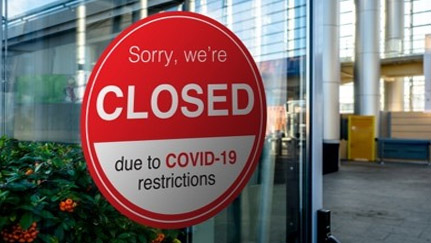Prepare your facility for reopening after a COVID-19 closure

There are specific precautions and directions to safely and properly reopen an idle facility. The following is a recommended procedure to help you.
The scope of the economic shut down due to COVID-19 has been an unprecedented event in our recent history. This pandemic has resulted in the mandated closure of many businesses including hotels, restaurants, offices, healthcare facilities and manufacturing operations. In the past, we recommended building closure/idle procedures to be used in this situation. Now, as we approach recommended times and dates to reopen our economy and idle buildings, there are specific precautions and directions to safely and properly reopen an idle facility. There will be concerns related to sanitation, electrical, fire protection, and other facility-specific operations that will need to be addressed during reopening of an idle facility.
The following is a recommended procedure to help you and your occupants reopen an idle or closed facility:
- Use of licensed and qualified contractors for all sanitation, and facility work is highly recommended.
- Follow CDC “social distancing” restrictions during reopening of your facilities with your occupants.
- Communicate all recommended usage of Personal Protective Equipment to your building occupants during your facilities reopening.
- Follow CDC-recommended sanitation procedures during reopening of your facilities.
- Inform local fire departments and police that you are in the process of reopening your facility.
- Inform your insurance agent that the facility is to be reopened and provide a time frame for this procedure.
- Continue to follow your emergency plans and business continuity plans during this reopening stage. Re-evaluate your plans and adjust as needed, both for function and responsible employees.
- Remove any accumulation of debris, both on the exterior and interior of the building.
Security
- Continue to provide guards as needed during off hours.
- Continue using and testing of any security alarms with notification to a central station as applicable.
- Maintain the use and function of all exterior lighting.
- Inspect all entrances, doors, locks, and windows and confirm that they are in good repair and operational.
- Inspect the facility exterior and interior for past break-ins, damage, vandalism and theft and report as necessary to law enforcement.
- Re-train security personnel as necessary.
Life safety
- Inspect and confirm all fire life safety egress marking, alarms, and lighting is in place and operational.
- Confirm all egress doors, door hardware, and egress ways are operational, free of obstructions, and functioning in a satisfactory manner.
- Review your emergency evacuation procedures and update as necessary.
Electrical
- Confirm that there have been no changes in power distribution and requirements for your facility.
- Inspect for any damages to your electrical distribution system, repair as necessary.
- Re-energize your facility as per building standards.
- Test as applicable all relays, breakers, fused disconnects, etc. as needed and repair as needed.
- Inspect and test any backup generators and backup power distribution systems. Repair as necessary.
- Thermographic inspection of your electrical would be highly recommended at this stage.
HVAC
- Confirm the system is operational and repair as necessary.
- Clean and replace filters as recommended by the manufacturer and any CDC requirements.
Fire protection
- Inspect and recharge as necessary all fire extinguishers.
- Physically inspect all automatic sprinkler valves for the fully open position.
- Specialty Fire protection should be confirmed for function as applicable.
- Confirm and test all fire protection alarms (smoke, flow, and tamper) for operation via testing and confirmation with any central station.
- Review and continue to implement your facilities’ fire protection impairment program.
- Confirm any “lock box” and fire department emergency entrance procedures.
Hot work
- Review and continue to implement your facility’s hot work permit system.
- Adjust the hot work permit system based on any critical employee responsibility changes.
Machinery and equipment
- Follow manufacturer’s recommendations and procedures for start up of all equipment and machinery.
- Inspect all boilers, pumps, chillers, and any other equipment as applicable.
- Re-train employees as necessary on use of machinery both in operation and safety.
Roofs
- Inspect roofs for any water leaks and damage and repair as necessary.
- Remove any debris found on the roofs.
- Inspect all roof drains for debris blockages and remove/clean as necessary.
Special hazards
- Inspect all flammable liquids rooms for function of ventilation, drainage, electrical, dispensing, spray painting interlocks, and fire protection.
- Inspect the facility for accumulation of combustible dusts and clean as necessary as per safe procedures for combustible dust cleaning and removal.
The above is not an all-inclusive procedure for reopening your facility or any and all facilities. Should you need additional assistance, our professional staff in Nationwide Loss Control Services can provide the additional information, assistance, and any recommended additional procedures for reopening your facility as needed and as per your request.
For information on how to protect your staff and clients for reopening after a COVID-19 closure, please refer to this document. For state-specific information regarding reopening a business: https://www.uschamber.com/article/state-by-state-business-reopening-guidance
